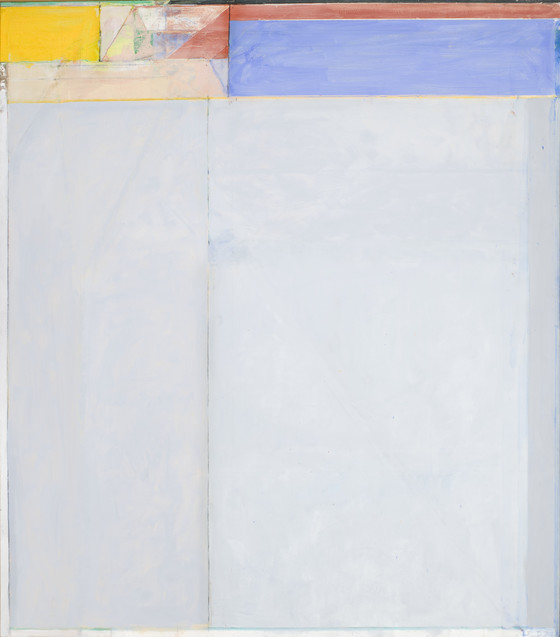During the late 1940s and early 1950s Richard Diebenkorn associated with Elmer Bischoff, David Park, and other young San Francisco artists whose innovative abstract expressionist paintings reflected t...
During the late 1940s and early 1950s Richard Diebenkorn associated with Elmer Bischoff, David Park, and other young San Francisco artists whose innovative abstract expressionist paintings reflected the restless energy of the years after World War II. Yet, by the mid-1950s, Park, Bischoff, and Diebenkorn had each turned to representation, a reversal symbolized by Park's abrupt destruction of his abstract works late in 1949: one afternoon he jettisoned all of them at the Berkeley city dump.
At the time this switch of polarity seemed both retrogressive and shocking; in fact it was part of a more general postwar revival of figuration. Yet each of the three painters remained preoccupied with the flat plane, tension between colors, and the viscous surfaces of abstraction. Diebenkorn continued to explore these elements in the California cityscapes, terraces and rooms, and beach vistas that attested his long study of Henri Matisse's interior scenes and landscapes.
Diebenkorn acknowledges a fascination with natural landscape forms seen from the air and the passages of tilling, planting, harvesting, and erosion. All this emerges in the Ocean Park series, which marked his return to abstract painting shortly after he moved from the San Francisco Bay Area to Los Angeles in 1965.
The Ocean Park paintings, about 140 in number, are generally tall canvases composed in variations of vertical and horizontal bars appearing over or under thin, washy panels of color. Like the plow's course through the fields of an aerial landscape, Diebenkorn's tracks remain in his paintings. He paints out, paints over, looks again, guided by the revelations the act of painting unfolds before him.
More...
